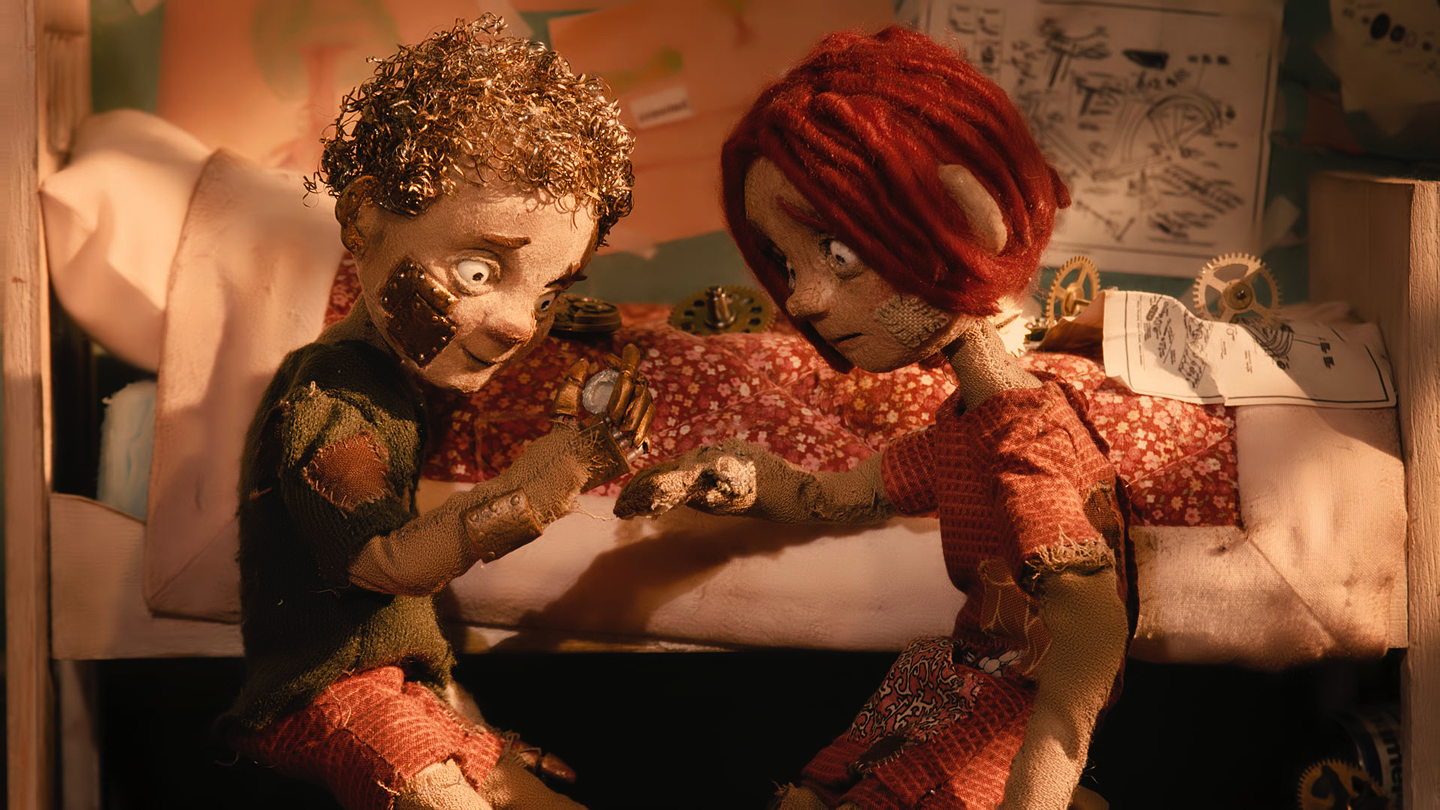
Drawing on her own personal experiences of growing up with a younger autistic brother, Jessica Ashman’s beautifully intricate stop-motion short Fixing Luka tells the affecting story of Lucy, a well intentioned girl who believes she can fix her broken brother if she just finds a way into his head. Premiering online here at DN after its successful festival run, Jessica tells us about the development of her first professional short and how she moved from reclusive animation weirdo to a Director marshalling the talents of a multi-disciplined team of creatives to produce an award winning film about love and acceptance.
As well as creating your own work, you sometimes run workshops for new animators. What do you try to impart about animation to the filmmakers you teach?
One of the most important things I try to bring across in my workshops is just how fun animation can be. Nothing bogged down in technique or jargon (because usually my workshops are to people who are having their first experience of animation), just the pure essence of movement and creating and how fun that can be. Obviously, moving something a tiny bit and then taking a picture and then moving it a tiny bit again doesn’t suit everyone…but it’s surprising how many people get into that ‘zen’ state of the animation process and end up enjoying it.
Fixing Luka was clearly an ambitious project which would have required you as Director to pull together lots of different skill sets. How did you go about building a team who would augment the filmmaking skills you already had?
Fixing Luka was quite an epic production considering it was my first professional short. It was also my first professionally funded film where I could hire a crew to help me. I remember Anna Odell, the fantastic producer of the short, telling me “You do the creating and I’ll make it happen”, and that made me really focus on this idea of collaboration. The team really came together due to one main aspect. At the time, I was living and working in Scotland as part of a Skillset/Creative Scotland funded apprenticeship scheme called Generating Animation Skills Programme (G.A.S.P!). The scheme consisted of paid work experience and support on animation productions across Scotland. I worked at a motion graphics studio called ISO and then on a BBC Scotland stop-motion kids show called Ooglies. So, I met all the crew between these two places really. Anna, and the CGI whiz James Houston were both working at ISO. I met all the excellent stop-motion model-makers and animators through Ooglies, as well as Ruan Suess, the DOP (who was also a trainee, like me, on the job).
Fixing Luka’s production company, DigiCult, had many connections to the industry too, so they helped me to meet people like the editor, Rachel Tunnard, colour grader, Tom Balkwill and sound designer, Romano Valerio, who I wouldn’t have met otherwise. Working with Fixing Luka’s crew was a joy. I had so much fun and so much support and I still feel incredibly lucky to have worked with so many talented people, wanting to bring the story to life.

How did your personal experiences of life with an autistic younger brother develop into the story for Fixing Luka?
A lot of the story of Fixing Luka came from just the plain frustration and mis-understanding I felt as a child as to why my younger brother acted the way he did. I’d be embarrassed about my brother’s way of approaching the world: his routines, his tempers, his sounds (I’m sure my sister felt this too). I didn’t know how to make peace with those feelings and just wanted him to be “repaired” and to be “normal”. However, my parents never promoted feelings of shame or oddness about my little brother and eventually as I grew up, the frustration I felt gave away to acceptance and pride.
I wanted to tell the story about the acceptance of the ‘other’ through love.
So, in Fixing Luka I wanted to try and portray this narrative of maturing, drawing from my own emotions. I even put in some little nods to the routines my brother used to do (i.e. lining toy cars up all across the house). I wanted to tell the story about the acceptance of the “other” through love. A lot of people have come up to me after seeing the film, saying they felt something along those lines and that makes me feel all sorts of fuzzy, lovely feelings inside.
Through its development life the short went from being called ‘Fall Into Position’ to ‘Ramshackle’ to its final title ‘Fixing Luka’. Did those name choices reflect narrative changes? How did you ultimately know you’d found the correct title ’fit’?
I think titles are important and I tend to agonise over the titles to all my films until sheer desperation sets in and I make a panicked decision! But yes, as you’ve astutely pointed out, Fixing Luka’s title changed with the narrative shifts of the script. At one point the film was more about two oddball siblings fitting into a world in general. Then the film title was more of a description of the relationship between Lucy and Luka. It was also a bit of a nod to the design texture of the world. But as the script kept changing and the story developed, I realised what the emotional crux of my film was about – a girl trying to misguidedly help her brother and the name stuck. Sometimes the simple ideas are the best.
You developed Fixing Luka through the Digital Shorts scheme. How did you go about first winning the ‘filmmaking X-Factor’ commission and then later working with DigiCult to produce the short?
DigiCult put a call out for short film stories and Fixing Luka had been floating around in my head for years. So, their deadline kicked me up the arse to actually formally write down the idea in treatment form (not even a script…I hadn’t got to that stage yet!) and I sent it in. I was miraculously selected along with 9 other very talented filmmakers. We all then had about 4 months to develop our stories with DigiCult to script level, in regular story sessions at their offices in Glasgow. That was such a strange process to me, developing a story with other people’s input. I was an unknown animator, used to being a weirdo reclusive. After those few months, DigiCult, UK Film Council and Creative Scotland picked the four films they wanted to commission and Fixing Luka was one of them.
I was an unknown animator, used to being a weirdo reclusive.
DigiCult were pretty respectful of my ideas in general. However, I had an amazing sounding with the producer, Anna. I felt because I had someone I could trust to talk to about the idea, I could then go into DigiCult’s development sessions a bit more confident of my ideas. DigiCult were invaluable in teaching me how to get the essence of a story in a short film, especially from the workshops of Paul Welsh, DigiCult’s exec. Whilst it was tough at times (I definitely shed a few defensive tears defending my decisions as a writer at times) I’m so glad I went through the process. They’re all about story over there.
Fixing Luka has a very tactile feel to it, almost as if you could reach into the screen and touch the textures. How did you develop the film’s stylistic pallet?
I’m glad you picked up on that. The look of the short generally stemmed from the idea of Lucy and Luka being broken clockwork dolls – Luka specifically. Fraying at the edges, dirty but innocent in character. The obscenely talented lead model-maker, Judith Johnston, did a beautiful job creating the models for the film, developing this style in a physical form, working from my drawings and painting. She played with texture and advised me on what would work and what wouldn’t.
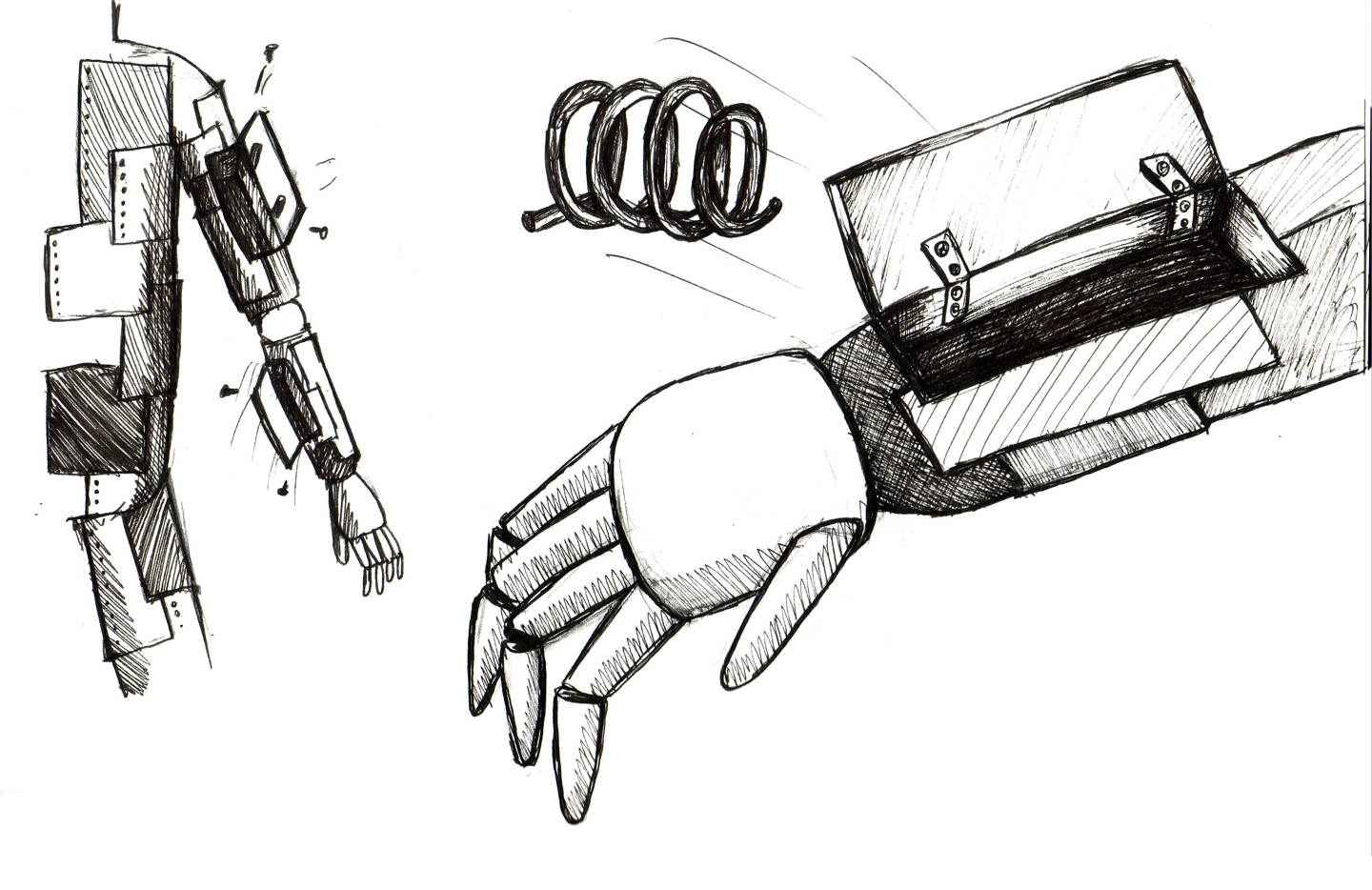

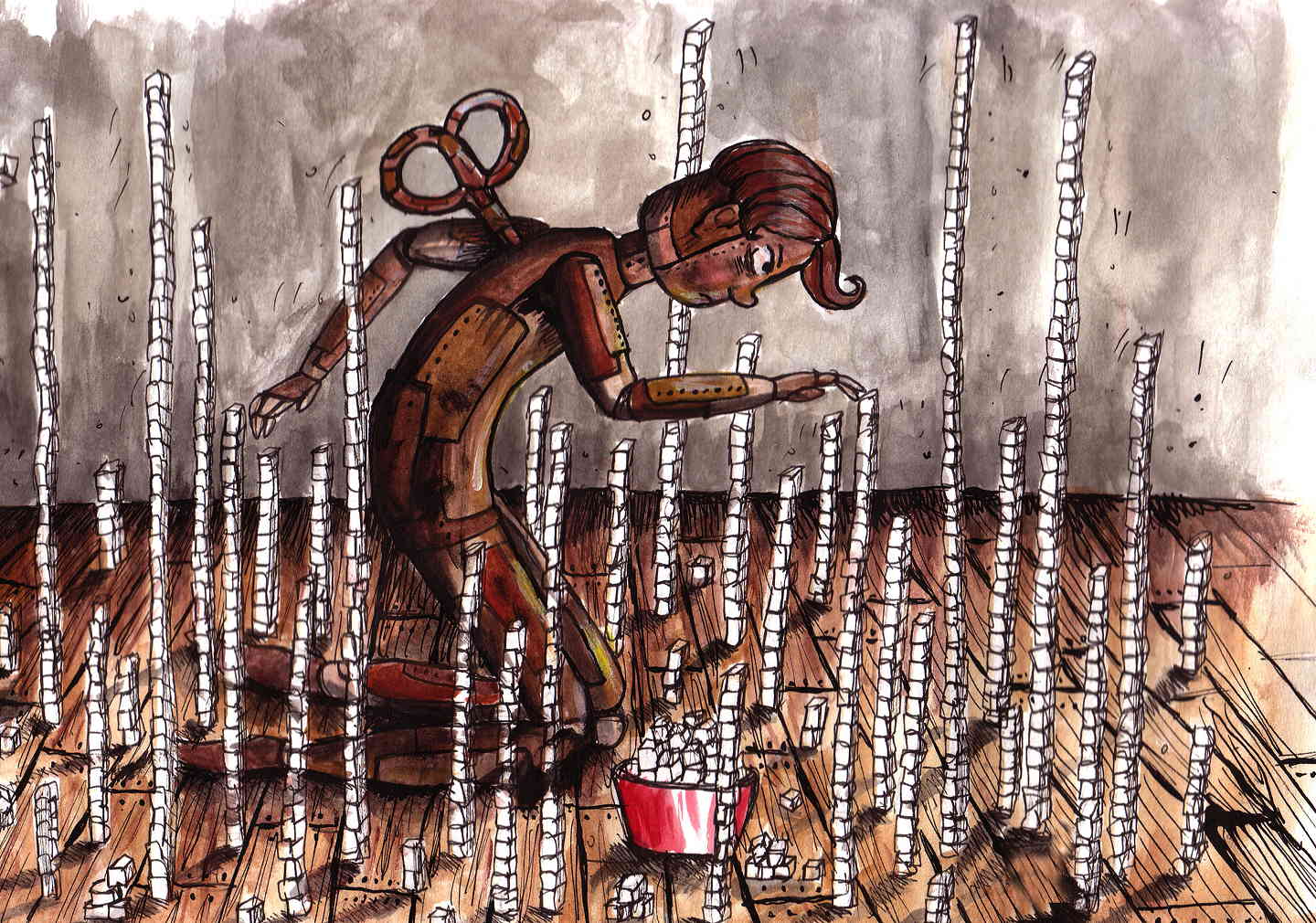



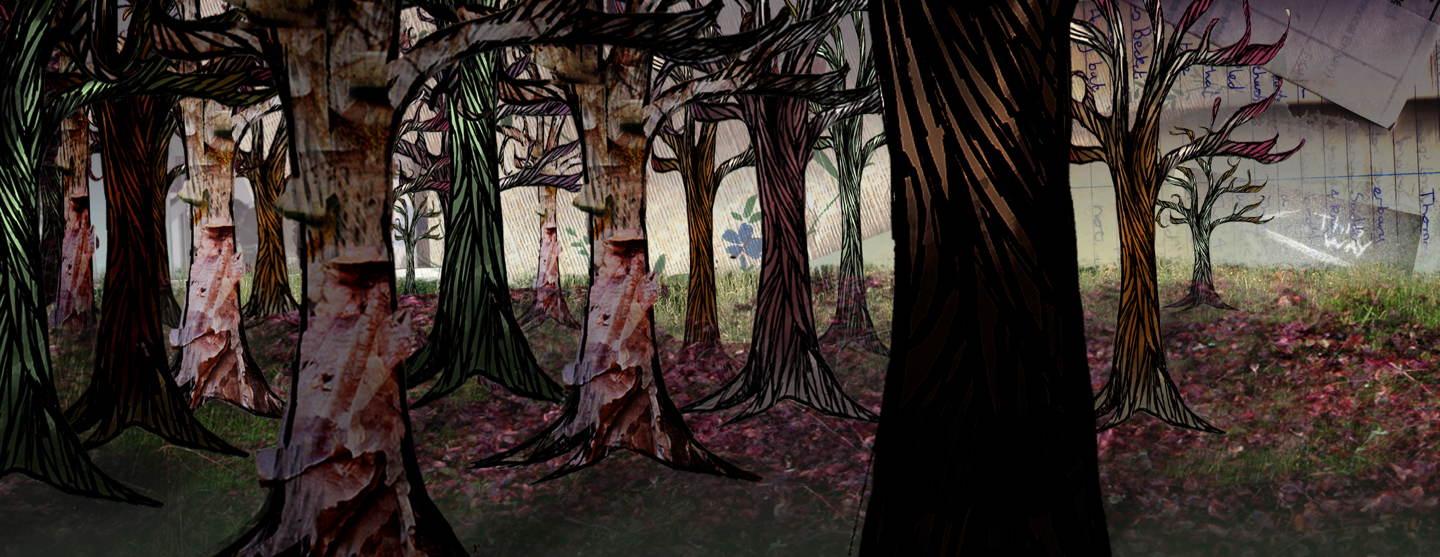

As more characters were added (like the mum and the toy soldier) this dilapidated style expanded to the whole world of the film. I experimented with collage in my concept work to really ramp up this ‘broken’ feel, but at the same time, the story started to develop more towards the side of family and ‘coming of age’. My family experiences and memories in terms of the narrative were seeping in more and more. Eventually, this all merged together and I settled on a purposely patchwork look that combined dreamy fragments of family nostalgia with a dark, magical, fairy tale look.
What was your process working with Cinematographer Ruan Suess once you got into the animation stage of the film?
The shooting process with Ruan was that he would come on set to frame and light the film for each new setup, then I would animate the shot and we’d start the process all over again for the next shot or scene. It was an intense process but I was so new to framing and lighting my own work, I needed to have someone as knowledgeable as Ruan on board. Working with Ruan was bloody amazing and he just went beyond and above in everything I asked of him. He lives in Edinburgh, and I lived in Glasgow at the time, so he was staying over in Glasgow repeatedly for months on end to help me shoot the film. He’s a God damn legend!
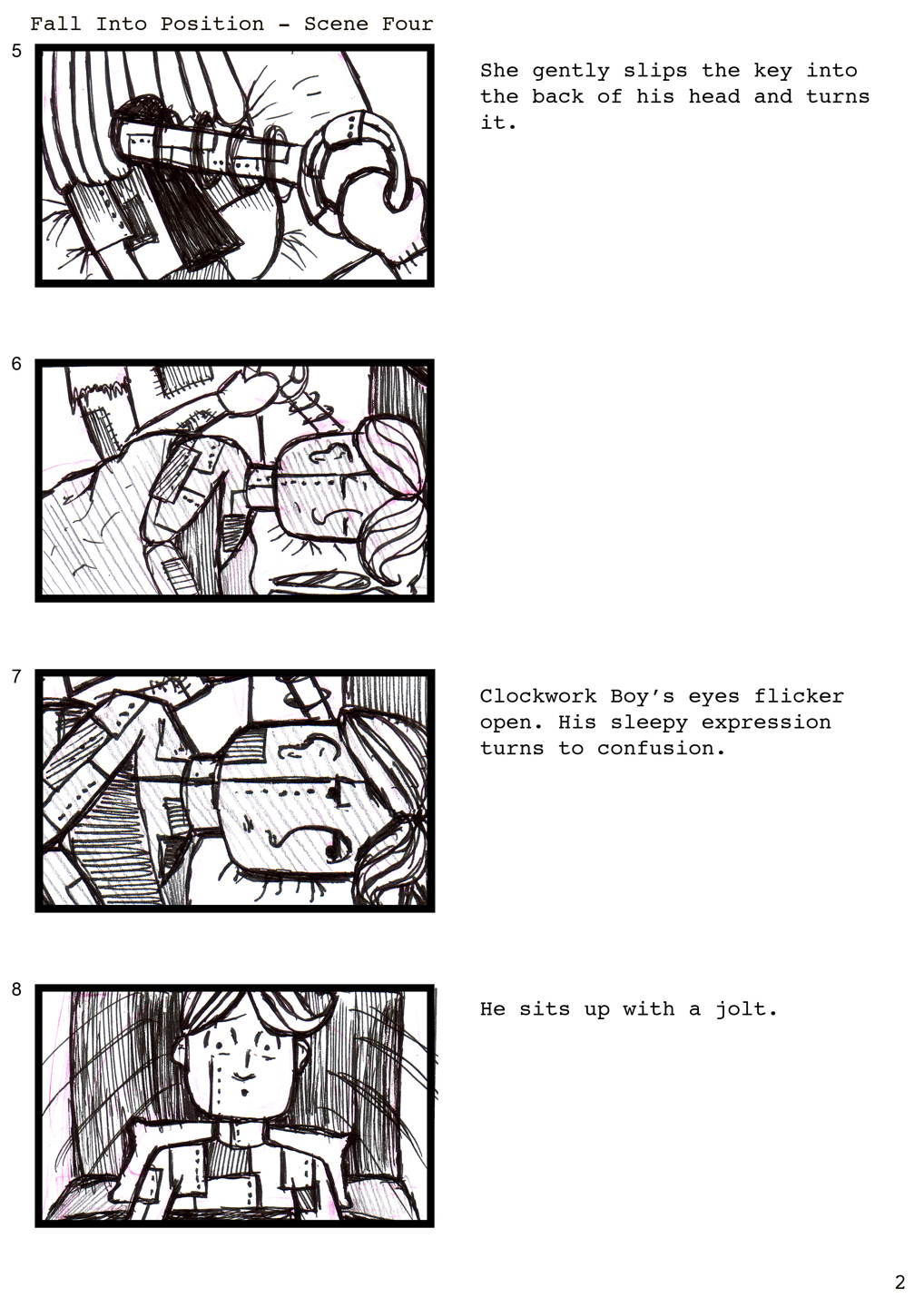
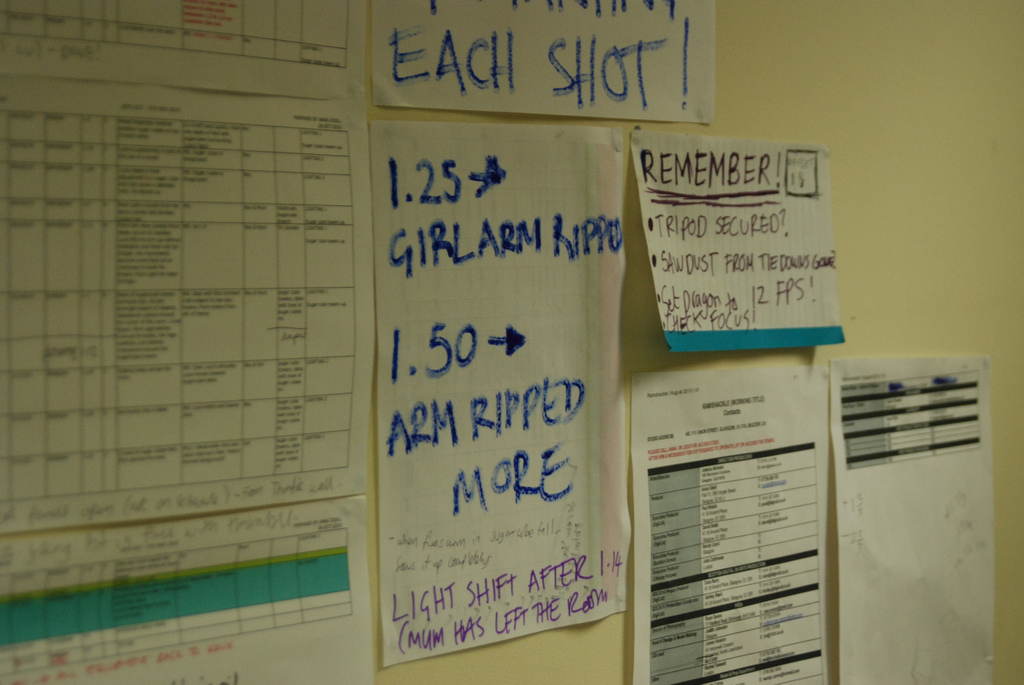
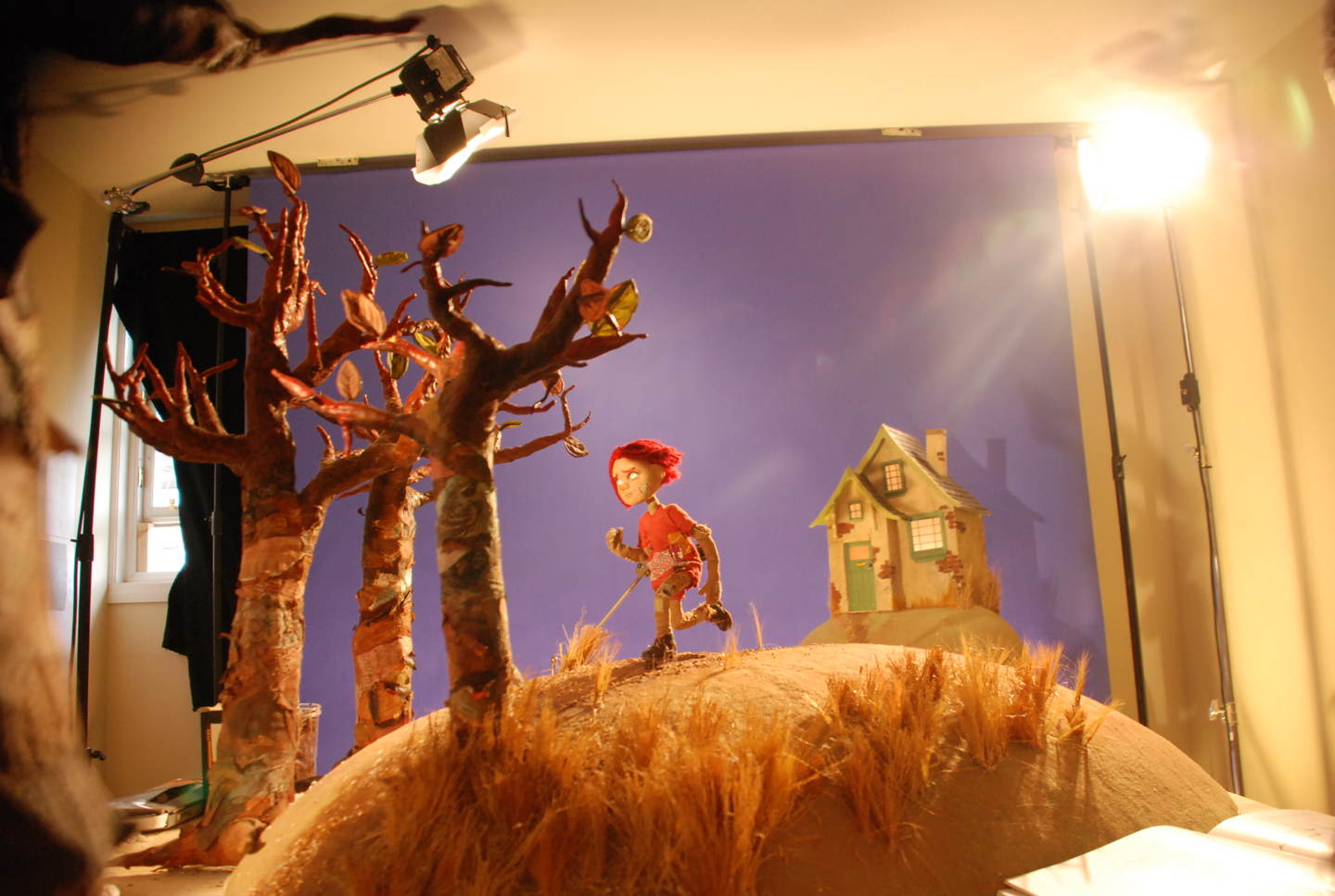

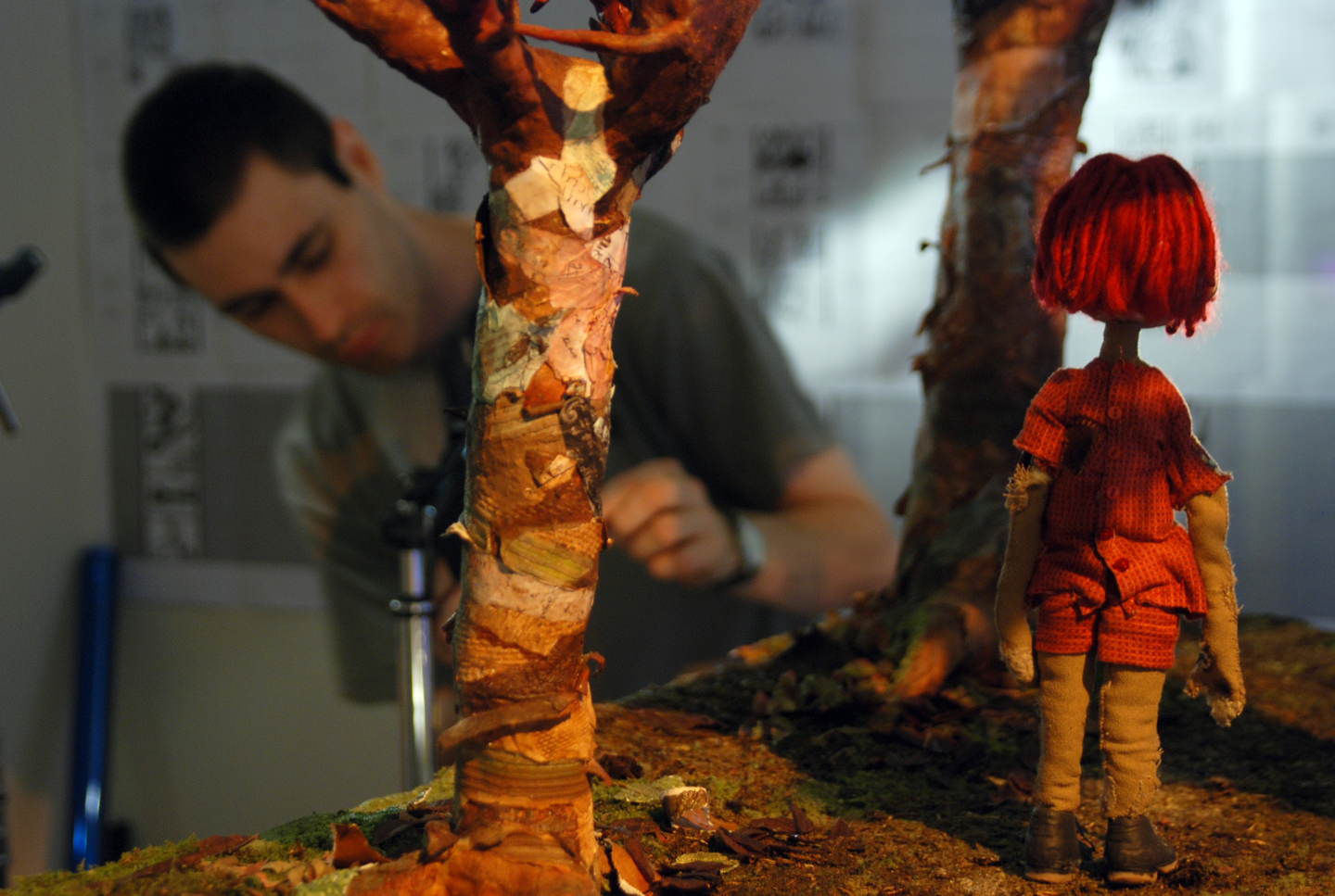
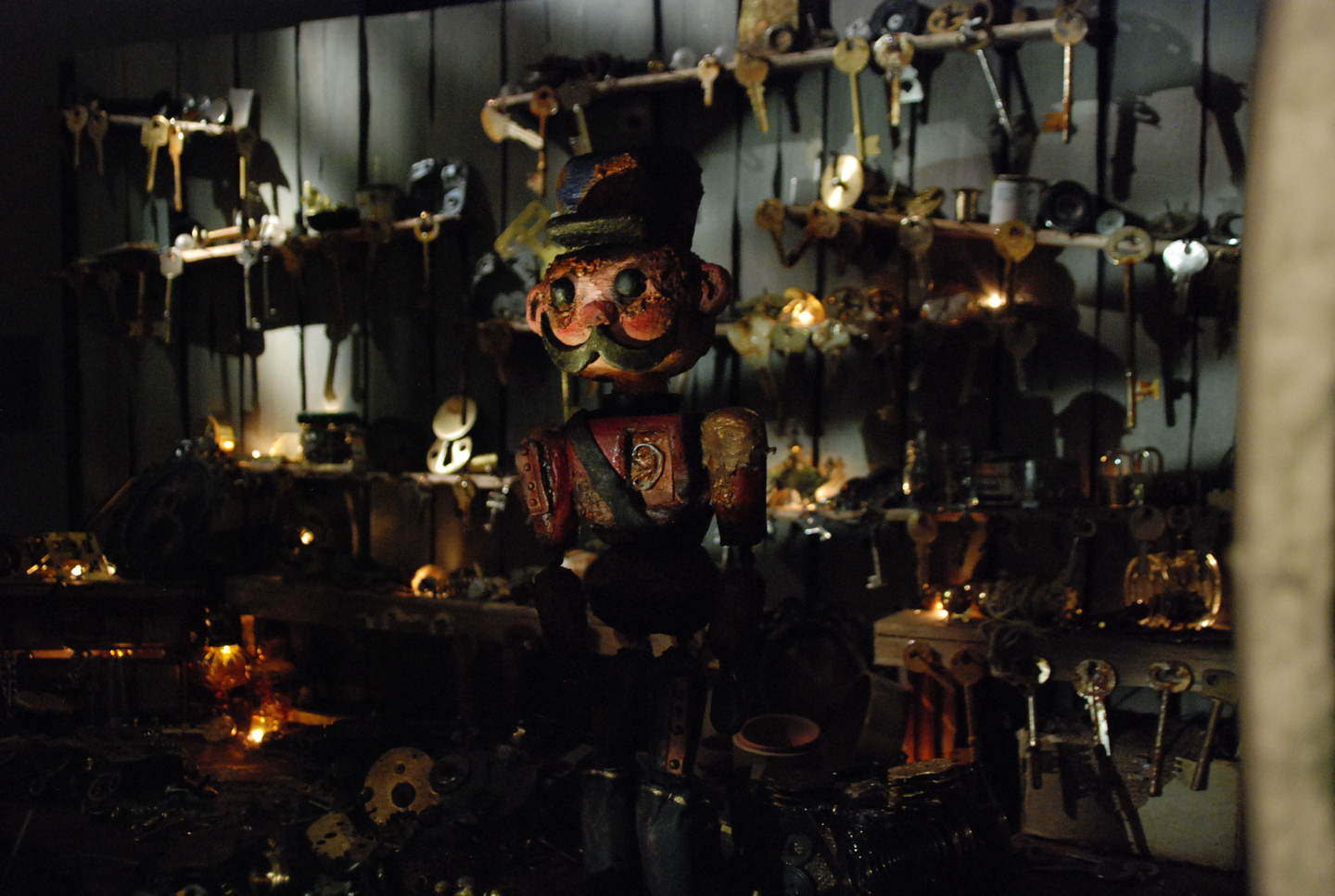
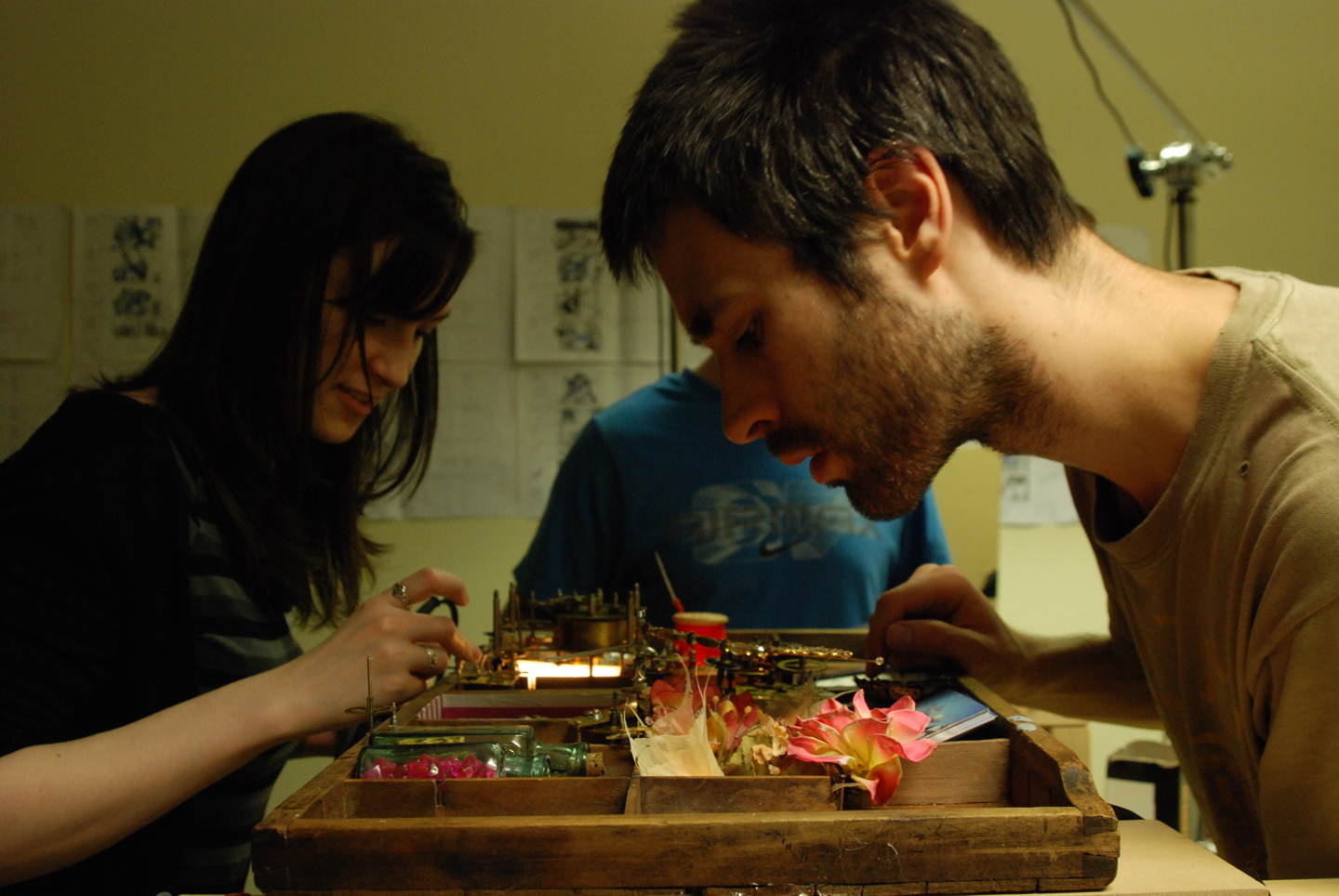

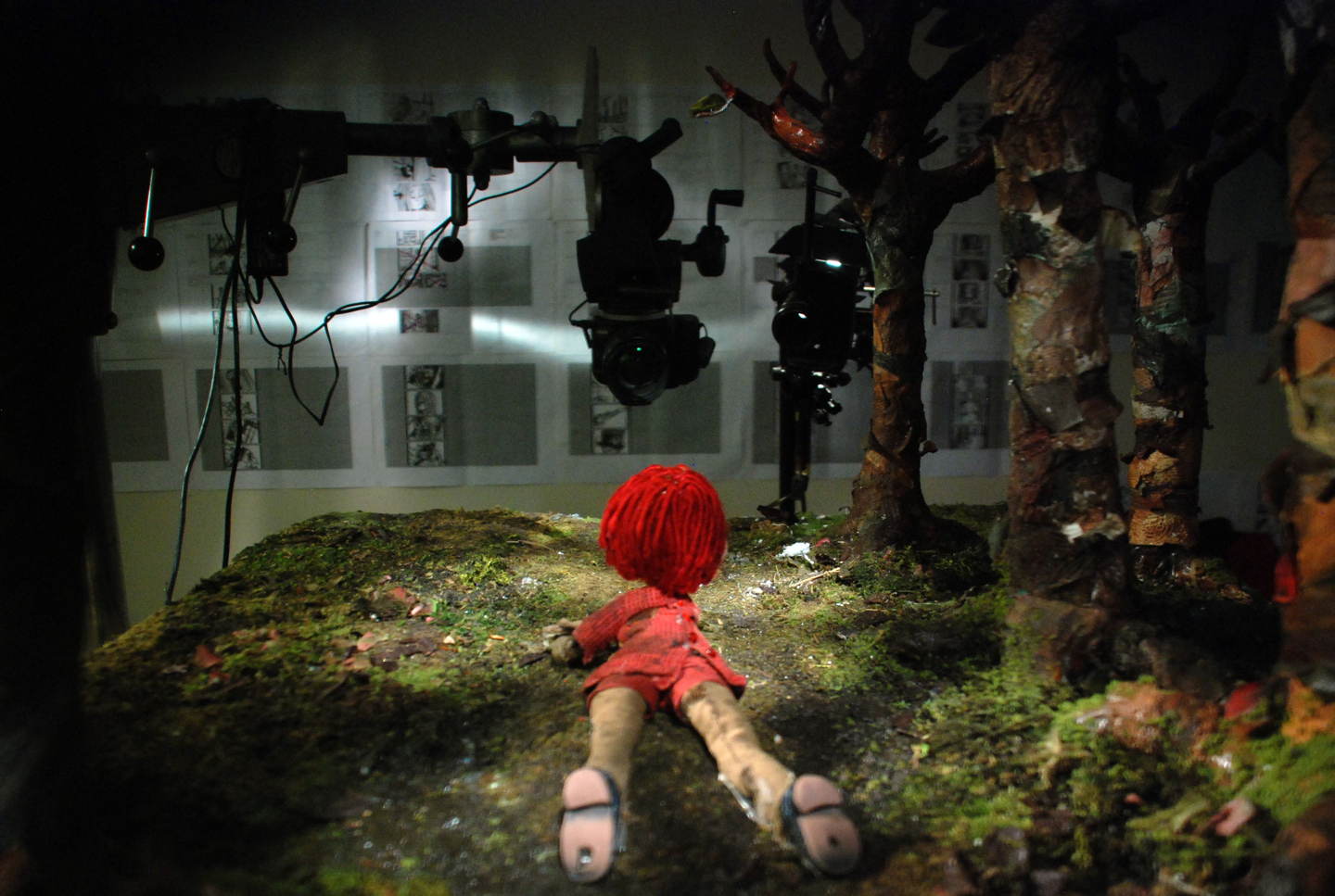

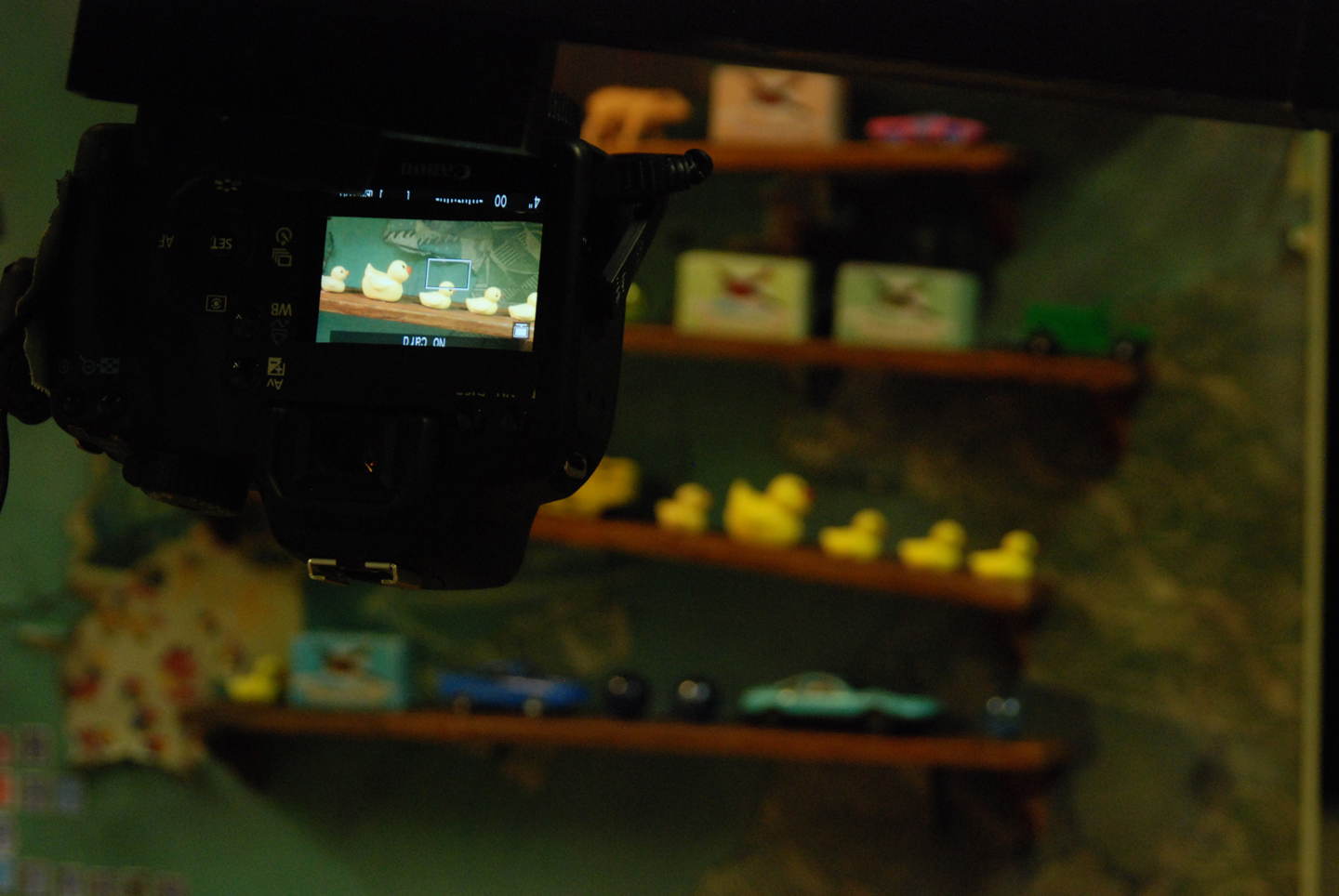
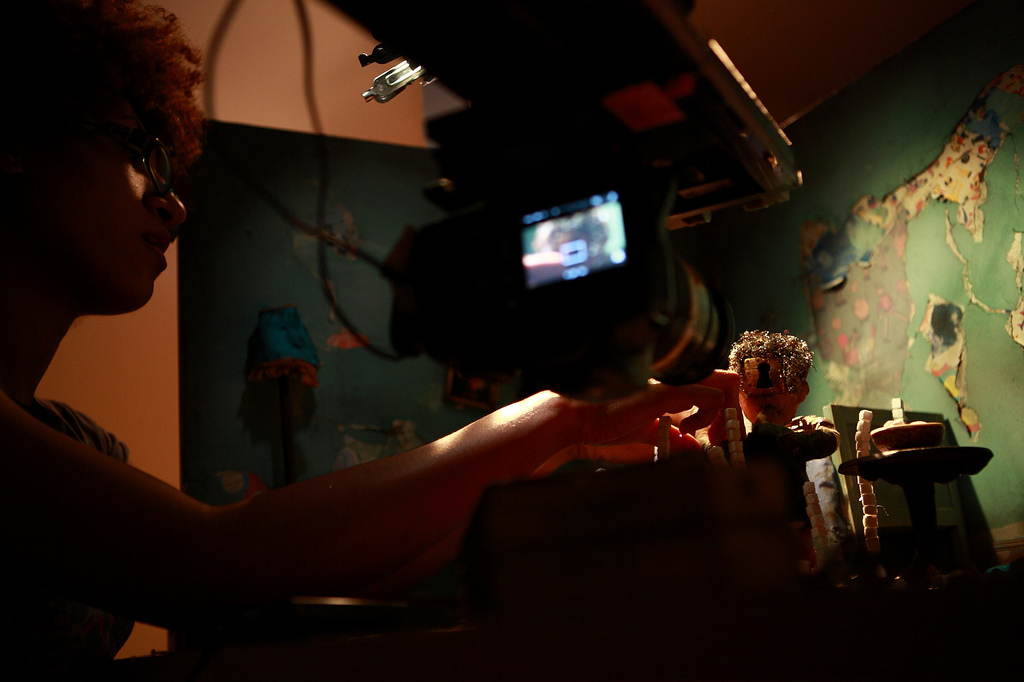


How long did the various stages of the film take?
After the film was commissioned, all in all, from making to shooting to post, the film took about 6 months. I guess with story development, it was close to a year of work. In terms of the production side, there were three main sets and we scheduled out the shooting, framing and lighting arrangements for each one individually. This would roll alongside set building and model making for the entire film. For instance, we shot all the green screen stuff first so there was more time to do the post later on. Whilst this was being shot, the bedroom set was being finished off etc etc..
Clockwork and mechanical sounds feature heavily in the sound design and score. How did you work with Composer Pete MacDonald and Sound Editor Romano Valerio to craft the auditory motifs which illustrate Fixing Luka’s action?
Pete MacDonald was my flatmate at the time (shout out to Burnbank Gardens!) so I asked him if he wanted to make wonky Tom Waits’ style music to some of my bizarre puppet animation for no money. He fortunately said yes! The score developed alongside the film via the use of animatics, storyboards and mix CDs I’d make for him, describing the feel of the film. The score initially started off sounding really quite aggressively percussive, but as the narrative became more gentle so did the music. This film was a lot of firsts for the whole crew and this was Pete’s first composing gig. He nailed it. The first time I heard the music from the scene when Lucy sees inside her head, I cried.

With Romano, the sound elements came last, after the final edit. I sent Romano an email describing the sort of thing I was after and he came up with some amazing sounds to reflect the clock-work world. We then met up at post production house 422.TV where he worked at the time, and spent a day laying down all the sound.
You’ve described the editing process with as “sobering” – how did Rachel Tunnard’s edit add renewed energy to the story? Did she kill many of your ‘darlings’ in the process?
Ha yeeeeeah. Well, with animation, you’re sort of pre-editing what you do with a storyboard and animatic, because you just want to make the shooting period as efficient as it can be. So I was a bit nervous about having an editor. But it was a brilliant experience. Rachel just gave the film a fresh pair of eyes and really took the time to understand my story. She also helped a lot with the pacing, which I think would have been rather clunky without her help. And her dad also made us an amazing courgette curry whilst we worked on the edit. Actually, Rachel didn’t actually kill many of my beautiful, beautiful animation babies…except for one tracking shot of Lucy running, which added nothing to the film. I realised I only wanted to keep in the film because it took bloody ages to do!
Although primarily a stop-motion short there is some CGI work in Fixing Luka. Was that mainly corrective or more to help fill out the strange, fairytale world you’d created?
The CGI work was brought on to create exactly what you’ve just said – an odd, mixed up take on a fairytale. It’s a patchwork world, so I wanted this to be reflected in the mediums…I just wanted everything thrown in there. But we definitely used CGI as a corrective measure and general post trickery too. James Houston was at the helm of all of this and as excellent at creating a mixed up world as fixing post problems and creating the titles.
It’s a patchwork world, so I wanted this to be reflected in the mediums.
This was the first time you worked with a professional colourist on a grade, what did that experience do for the look of the film?
Yes, this was a first for me and something I actually didn’t know existed! It was a brilliant experience and it allowed for the separate colour palettes of the scenes to flow into each other nicely and enhanced Ruan’s stellar lighting even more. Tom Balkwill, over at Dirty Looks did the grade and I sent him links to films such as Delicatessen and The City of Lost Children as inspiration to what the colour palette of the film was inspired by. Working with Tom was one of the most satisfying parts of the project (the final stage..!) and gave FL a gleam and polish which gave it a real professional look.

Fixing Luka, won the Scottish-BAFTA for animation in 2011 and was nominated for two New Talent BAFTA awards. Did the film’s awards success translate into opportunities for you as a filmmaker?
It definitely opened doors for me and led to clients and production companies taking me a bit more seriously. It’s also helped with the film’s success at festivals, as it seems more fests were willing to pick it up. Winning an award with BAFTA attached also helped with funding opportunities for new projects. My dad always says my freelance jobs will look ‘good on my CV’, which I always sort of scoff at with a reply of ‘it’s about showreels, Dad, geeeez!’. But in this case, he was right.
You’ve waited three years to bring the film to an online audience. Why the wait? Is that a model you plan to repeat with your new pieces or do you view online distribution differently now?
Ok, so this is an interesting question but I can answer one aspect straight away…I would NEVER repeat that distribution model again! I feel there were a lot of missed chances due to the wait. The reason for the wait to put the film online was because it was tied to a festival and TV sales contract for 2 years which forbade us from putting the film on the internet. Further complications arose from that and it ended up being three years.
I would NEVER repeat that distribution model again! I feel there were a lot of missed chances due to the wait.
I was quite excited about getting a sales agent at the beginning, thinking it was a sign of success for the film and would get the film to a wider audience, but in all honestly, this didn’t happen. Ultimately, I believe it’s the internet which gets a film to a wider audience, especially for a genre like animation. However, in saying that, I really loved the film festival experience and I did that for about a year and a half, meeting so many talented filmmakers and programmers I would never ordinarily have met. But in hindsight, I definitely wish I’d chosen to put the film online after this festival period.
So far there’s only been a trailer for your RCA grad film Tenderfoot, when might we get to see that online too? What other projects have you got on the cards for this year?
Hopefully soon! I’m still in the midst of the whole festival thing, trying to get it out in the world. It’s tricky, because I’m wrestling with just putting it on online soon, because I know it could reach a wider audience, but I’ll wait it out.
Right now, I’m trying to balance my workshop practice and other creative work (teaching and animation technician work mainly) with finding the time to write a new short film. Myself and another RCA graduate, Hayley Warnham, also have plans to make a short about the mediocrity of being ‘in between projects’ (or un-employed to most). I’m also looking for a studio space with a mix of RCA graduates and other creatives so we can start working on small, fun animation projects just for the hell of it and have a hub too, well…freelance out of. And I really want to try my hand at some projection mapping…!


